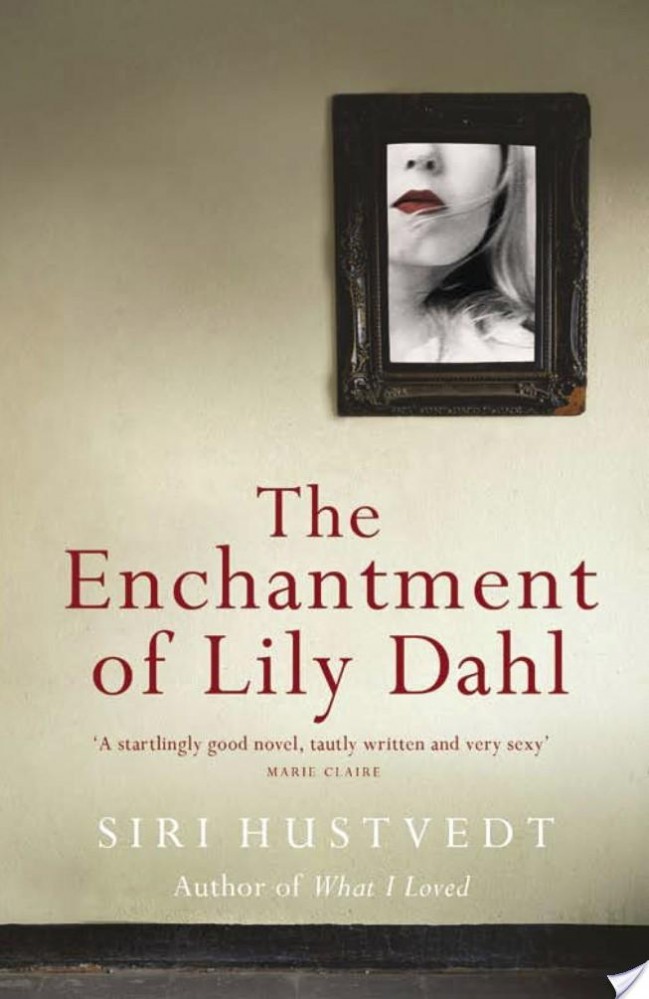Our book group choice for December 2005 is The Enchantment of Lily Dahl by Siri Hustvedt. The protagonist of Hustvedt’s second novel is a heroine of the old style: tough, beautiful, and brave.
Standing at the threshold of adulthood, she enters a new world of erotic adventure, profound but unexpected friendship, and inexplicable, frightening acts of madness. Lily’s story is also the story of a small town – Webster, Minnesota – where people are brought together by a powerful sense of place, both geographical and spiritual. Here gossip, secrets, and storytelling are as essential to the bond among its people as the borders that enclose the town.
The real secret at the heart of the book is the one that lies between reality and appearances, between waking life and dreams, at the place where imagination draws on its transforming powers in the face of death.
Discussion Questions
- Hustvedt makes great use of Shakespeare’s play, A Midsummer Night’s Dream referring both to its lines as well as its themes. How does this play relate to the unfolding story of Lily Dahl? Does it have a double meaning within the story?
- Spying and voyeurism both have a presence in The Enchantment of Lily Dahl. In the beginning of the novel, Lily spies on Ed from her window. Mabel spies on the dark, shadowy character who lurks outside the Stuart Hotel, himself spying, and Martin’s later voyeurism becomes obsessive. Why are the various characters driven to spy? Does Hustvedt make a connection between voyeurism and modern society?
- Lily Dahl steals a pair of white shoes from the Bodler farm. “She liked the curve of their stacked heels and the softness of the leather” (p. 30). Many things happen to these shoes during the course of the story. They prompt Lily to undress in front of her window for Ed Shapiro. When she feels guilty for having stolen them, she tries to return them to the Bodler farm, but finds that she cannot. When she throws them into a fire to burn them, she ends up retrieving them only to hide them under her bed. What do the shoes mean to Lily? What do Lily’s actions regarding the stealing, wearing, and returning of the shoes indicate about her character? Why is it so important to her to return them? What does she hope to bury when she finally wraps the shoes in white cotton fabric and buries them near the Bodler farm?
- Discuss the eroticism in The Enchantment of Lily Dahl. For example, Mabel has a very erotic drawing of Japanese lovers that Lily notices. Inspired by the stolen shoes, Lily strips in front of her uncurtained window for Ed. What are some other examples of eroticism? What role does it play in the novel?
- Lily says that she is attached to the small town of Webster, even though she feels she might one day escape it. “I feel close to this place,” Lily says. “It must be in my bones” (p. 93). What does she mean by this? How is Lily a part of this community? In what ways does she finally stand apart from it? How does Hustvedt use the small town of Webster to contribute to the novel’s blurring of illusion and reality?
- Ed is a stranger in the town of Webster. Discuss his “otherness” in terms of the various characters’ perceptions of him. What effect does his presence have on the events that unfold?
- Who are the Bodler twins, and what do they represent? How is the secret of their mother’s death important to The Enchantment of Lily Dahl?
- One of the most striking images in the novel is that of Martin Petersen crossing the river in a fairy costume, carrying a doll in his arms. Explain the symbolism of the elements of this image: the doll, Martin’s costume. What, in his performance, is he acting out or reenacting? How does this experience forever change the way Lily views the world?
- The idea of what is real and what is illusion permeates the novel, particularly through the character of Martin Petersen. He says to Lily, “I’m looking for the way in, I want to find an opening. Do you ever feel that nothing’s real?…it’s like there is a skin over everything” (p. 64). How does Martin serve to represent this world between reality and illusion? Once he’s drawn Lily into this world, what distinctions, if any, does she make about reality and illusion?
- Ed paints the portraits of various disreputable characters in Webster. What is he interested in capturing or uncovering in his paintings of them? What do his subjects have in common? It is said that there is something “aggressive” in his paintings, and that he is painting privacy itself. What does this mean?
- How is Lily transformed by the bizarre events into which she is drawn? What about Lily’s character leads her to become involved with the strange people and situations that she encounters? What changes do the other characters experience? How are these characters different at the end of the novel?
- What is The Enchantment of Lily Dahl?

